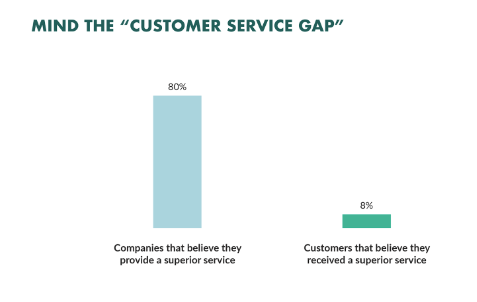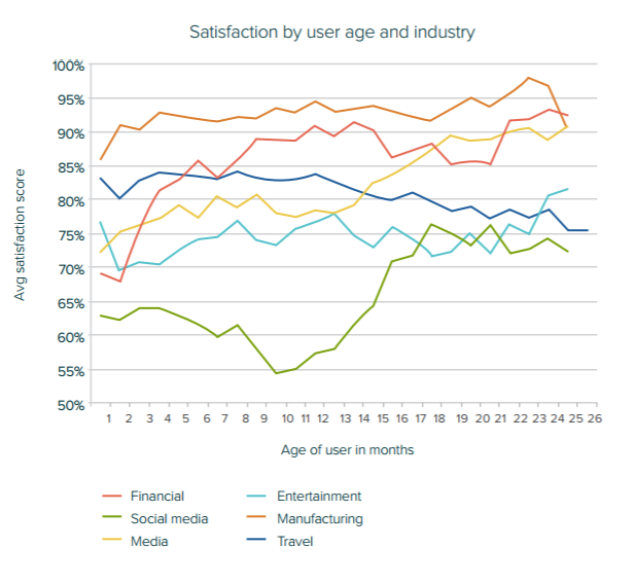Customer service vs. customer success. They both affect customer experience, but are they the same thing? And if not, what’s the difference?
Are you utilizing these tools to give your customers a positive customer experience? Finding the answers to these questions is something many business leaders have to deal with. In today’s world of saturated markets, discerning customers, and fast-paced technological advancements, it can be hard to keep up with the best business practices.
Customer service and customer success sound similar, and they do have some similarities. But they’re not the same thing, and treating them so might do your business a disservice. You might have amazing VoIP providers for all your customer service needs, but what if you could expand your customer relations to even higher levels?
Understanding both customer service and customer success as different concepts with some overlapping principles can offer you exciting new ways to grow your business. Let’s look at some definitions to get us started.
Start your day
with great
quality
content
What is customer service?
Customer service is reactive.
Customer service teams are on hand to solve problems when your product or service goes wrong. They answer customer questions, direct customers to self-help services, fix issues, and liaise with product teams to improve things going forwards.
Customer service comes with high expectations. Customers want quick response times, an empathetic ear, and friendly resolution. Support teams can use a customer service platform to help streamline and improve the experience, but the essence of customer service is always going to be a reaction to a problem that has already occurred.
By the time your customer service has kicked in, your customer has already reached out to you.
What is customer success?
Customer success is proactive.
Unlike customer service, which kicks in after a problem, customer success is an ongoing process. It begins the moment a customer becomes aware of your brand, and it doesn’t have a fixed end-point. It’s a relatively new concept compared to the time-old tradition of customer service, and therefore it opens up new growth opportunities.
Customer success can help you:
- Build and nurture relationships with your customers.
- Understand and anticipate your customers’ needs.
- Refine your product or service in an ongoing effort to improve the customer experience.
- Help customers use your product or service most optimally.
- Satisfy customer needs at every step of their journey.
- Retain more customers.
- Create brand advocates by having loyal customers recommend your business to others.
Overall, customer success requires a more holistic approach to supporting customers.
Here are some ways you can get started:
Customer journey mapping
Know your customers, their needs, and their goals. You can create buyer personas and map their journeys to pinpoint key places where your customers need to hit certain milestones or where they might need extra support.
Automation
Automation will save you time and resources.
To get the best customer success data, you can use analytics tools to monitor customer experience. If customers are hitting roadblocks, you can preemptively reach out to help; if customers are hitting their milestones, you can see where your product or service is working.
You can also use automated text or email services to check in every now and then–show your customers that you’re there for them.
Customer surveys
Data direct from your customers is the best kind of data.
It’s straight from the horse’s mouth, which does something analytics can’t: take into account how your customers feel about your product. The data gathered from customer surveys is also given willingly, which is a good way to make your customers feel like you value their consent.
Customer service vs. customer success
To use both strategies effectively, it’s important to understand their differences.
Reactive vs. proactive
As we mentioned earlier, the main difference between customer service and customer success is its place in the customer journey.
Reactive customer service is necessary to maintain your product or service. Good customer service gives customers a lifeline when things go wrong, which cuts down on churn. For example, being on hand to offer online customer service support if they have problems with one of your products or services.
Proactive customer success is a new way of turning customer service into a journey that supports your customers at every step.
Single interaction vs. ongoing interaction
A customer reaches out, support responds, and the issue is resolved—that’s customer service—short and effective.
Customer success is a much lengthier interaction. It’s about building ongoing relationships with customers, understanding their needs, and striving to meet them.
Goals
The goal of customer service is to resolve problems promptly, leaving satisfied customers with a working product or service. This cuts down on churn and can mitigate refunds and negative reviews.
Customer success is more comprehensive and has multiple goals:
- Foster customer loyalty.
- Create brand advocates.
- Cross-sell or upsell to existing customers.
- Increase customer retention.
- Create customers with higher lifetime value.
- Increase repeat purchases.
Metrics
Customer service metrics measure more tangible data: the issues your customers are having, your resolution time, and your customer service quality. For example, restaurant customer service could have metrics for time to seat customers, time spent waiting to be served, and time spent waiting for their meal to arrive.
Customer success metrics vary and span a wider range of data. They measure how your product or service impacts your customers in every aspect, whether that’s personal or business-related. Does your B2C product make your customer’s life easier? Does your cloud contact center meet your B2B client’s demands?
These aren’t customer service issues since there is no specific problem to address; they’re issues that require a more holistic approach. Customer success measures the total lifetime value of a customer.
Skills
Customer service requires a broad range of skills. Some customer service teams are required to answer phones and be polite and helpful. Some require advanced technical or engineering skills to solve problems.
Either way, businesses understand their customer service requirements and hire accordingly.
The skills required for customer success are broader still, which can cause problems for businesses. Firstly, customer success is a relatively new concept, and so businesses need to consider what that means to them and embrace unique hiring and training methods.
A customer success team might require data analysts, consultants, and empathetic leadership with a good understanding of people’s needs. Customer success teams need to be integrated into all aspects of your product.
Impact
Customer service is an essential tool for any business with customers. There will always be problems in need of a resolution, and somebody has to be the frontline between product and customer.
Customers expect support, and businesses have customer service built into their operating costs. It’s a simple fact of running a business.
Customer success is not essential—although many businesses are adopting it as such. With its much more holistic approach, customer success is harder to quantify. How do you budget for it? How do you hire and train the right staff? Do you need to purchase new tools such as KPI or project management software?
The impact of customer success on your business might be increased costs with uncertain outcomes. There is huge potential for growth using customer success, but it requires careful consideration.
Ultimately…
Your business probably has a customer service team. If you’re going to implement customer success strategies, it’s important to understand both the similarities and differences.
They are two separate entities and should operate as such, but they should also work together and complement each other.
- Customer success teams can bolster customer service, and support teams can suffer less strain if customer needs are being met holistically.
- Customer service will always be a necessity. Customer success can take you one step further in giving your customers a positive experience and building those all-important relationships.















